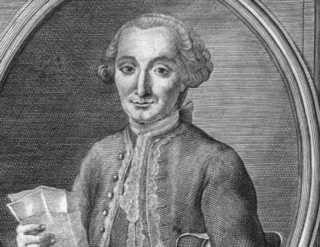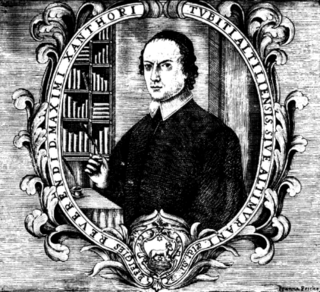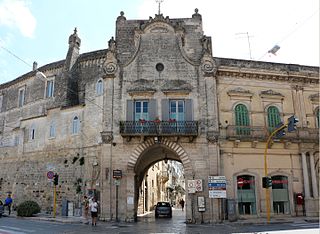
Alcamo is the fourth-largest town and commune of the Province of Trapani, Sicily, with a population of 44.925 inhabitants. It is on the borderline with the Metropolitan City of Palermo at a distance of about 50 kilometres from Palermo and Trapani.

Pesaro is a comune (municipality) in the Italian region of Marche, capital of the province of Pesaro and Urbino, on the Adriatic Sea. According to the 2011 census, its population was 95,011, making it the second most populous city in the Marche, after Ancona. Pesaro was dubbed the "Cycling City" by the Italian environmentalist association Legambiente in recognition of its extensive network of bicycle paths and promotion of cycling. It is also known as "City of Music", for it is the birthplace of the composer Gioachino Rossini. In 2015 the Italian Government applied for Pesaro to be declared a "Creative City" in UNESCO's World Heritage Sites. In 2017 Pesaro received the European City of Sport award together with Aosta, Cagliari and Vicenza.

Altamura is a town and comune of Apulia, in southern Italy. It is located on one of the hills of the Murge plateau in the Metropolitan City of Bari, 45 kilometres southwest of Bari, close to the border with Basilicata. As of 2017, its population amounts to 70,595 inhabitants.

Altamura Cathedral, dedicated to the Assumption of the Blessed Virgin Mary, is a Roman Catholic cathedral in the city of Altamura, in the Metropolitan City of Bari, Apulia, in southern Italy.

The Palatine Gate is a Roman Age city gate located in Turin, Italy. The gate provided access through the city walls of Julia Augusta Taurinorum from the North side and, as a result, it constituted the Porta Principalis Dextra of the old town.

Altamura Castle was a castle located in the city of Altamura, now completely demolished. It was located over today's piazza Matteotti and a few remains of it are still visible inside the adjacent buildings, which were built partly with stones and structural elements from the castle. In a warehouse are an ogival arch and some stone coats of arms. A few other remains are found in the adjacent buildings, which were built in the 19th century.

Pulo di Altamura is a doline located on the Murge plateau. It is the largest doline in that region and it is located about 6 kilometers (3.7 mi) north-west of the city of Altamura. It shares the local toponym pulo with other large dolines of the region, i.e. Pulicchio di Gravina, Pulo di Molfetta and Pulicchio di Toritto.

The Arab fountain of Alcamo is very ancient, and is still functional: it was built during the period of the Arab domination of the town. It is located in the lower part of Alcamo, at about 300 metres from the Sanctuary of Madonna of Miracles.

Cesare Orlandi was an Italian writer and historian. He was a nobleman of Fermo, Atri and Città della Pieve, and he's known only for his work Delle città d'Italia e sue isole adjacenti [sic] compendiose notizie (1770-1778), which contains comprehensive details and high-quality landscape views of many Italian cities. It was published in volumes over almost a decade (1770-1778). He is likely to be the "Abatte Cesare Orlandi" who edited and published an edition of Cesare Ripa's "Iconology" in 1764, which contains a portrait.

The Altamuran Revolution was a three-month period of self-government of Italian town Altamura, right after the birth of the Parthenopean Republic which ousted the Bourbons and the Kingdom of Naples. The city of the Kingdom of Naples was then defeated and taken by the so-called Sanfedisti, led by cardinal Fabrizio Ruffo, after a battle on the city walls. After being defeated, most Altamurans managed to flee through Porta Bari, one of Altamura's main gates.

Vitangelo Bisceglia was an Italian botanist, agronomist and professor. He taught inside the University of Altamura. Because of his being a polymath, he's been described as "an encyclopedic spirit, the honor of the Muses".

Massimo Santoro Tubito or Latin: Maximus Xanthorus Tubitus was an Italian priest and writer. He's best known for his books Divinum Theatrum (1702) and De Antichristo (1712), both of them written in Latin. The subjects covered are history and religion.
Domenico Santoro was a local historian and physician closely related to the city of Altamura, Kingdom of Naples. He's known mostly for his essay on the history of the that town: "Description of the city of Altamura".

Piazza del Duomo is the main square of the city of Altamura, Italy. It is located in the center of the historic city center, as well as in the middle of the main street of the city, that is corso Federico II di Svevia. Moreover, Altamura Cathedral, the main church of the city, is located on the square. It is also known because the Tree of Liberty was planted in this square during the so-called Altamuran Revolution (1799).

Porta Bari, previously called Porta de Bari, was one of the main gates of the city of Altamura, before the city walls of the city were torn down over the 19th century. Similarly to most European cities, the city walls were torn down, because the new technology and military techniques employed starting from the 19th century made them useless for defense purposes.
Angela Bianca Tragni is an Italian journalist and writer. Over her career, she carried out research in the culture of the Italian region Apulia and folklore of Southern Italy. She also wrote books on history, especially the Middle Ages.

The Archaeological site of Mount Bonifato is located in Alcamo, in the province of Trapani, in Sicily.
Francesco Cassiano de Silva was a Spanish engraver. His engravings mainly depicted some cities of the Kingdom of Naples and they represent an invaluable source of information on the history of Southern Italy.

Porta Matera was one of the main gates of the old city of Altamura. They were part of the City Walls of Altamura, which were completely demolished during the nineteenth century since they had become useless for defence purposes. The gate itself was demolished in 1872. The monastery Monastero del Soccorso is located on the left side of the gate, while on the right some ruins of the city walls can be seen, presumably saved from destruction because of the bas-relief depicting "Pipino's leg".

The City Walls of Altamura were a military structure meant for defensive purposes and located in the city of Altamura, Italy. Its origin dates back to the Middle Ages and it was in use until the 19th century when it started to be gradually torn down. Nowadays only a few isolated parts of the walls survive. It shouldn't be confused with the Megalithic Walls of Altamura, which date back to the 5th–4th century BC and intersect in some parts with the city walls.




















